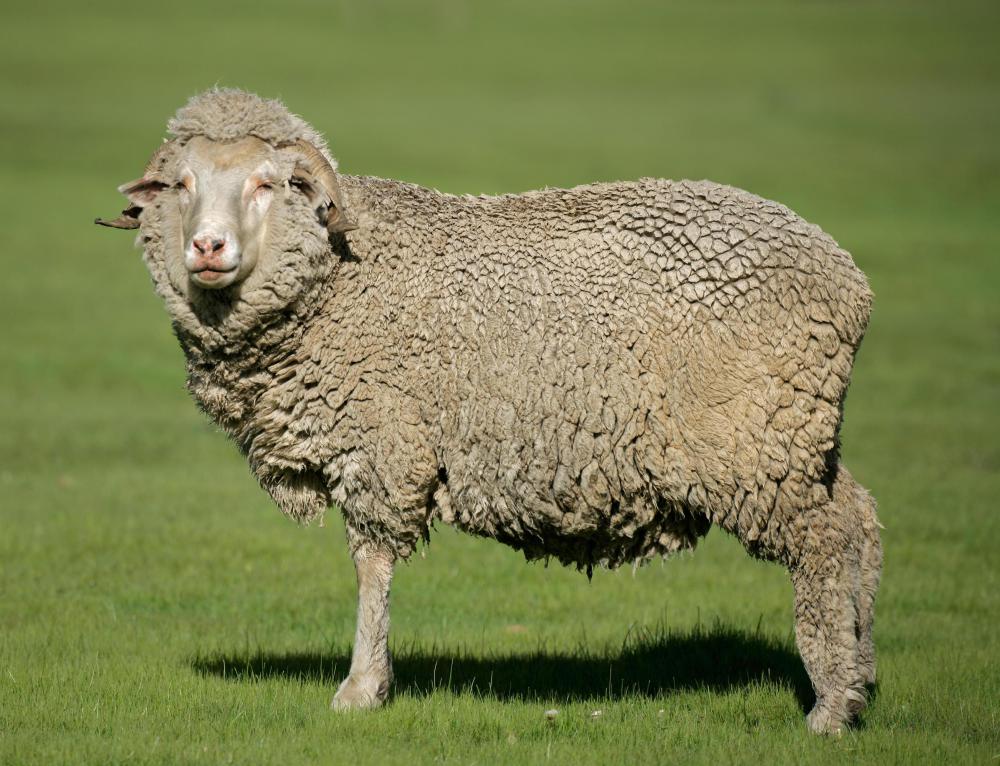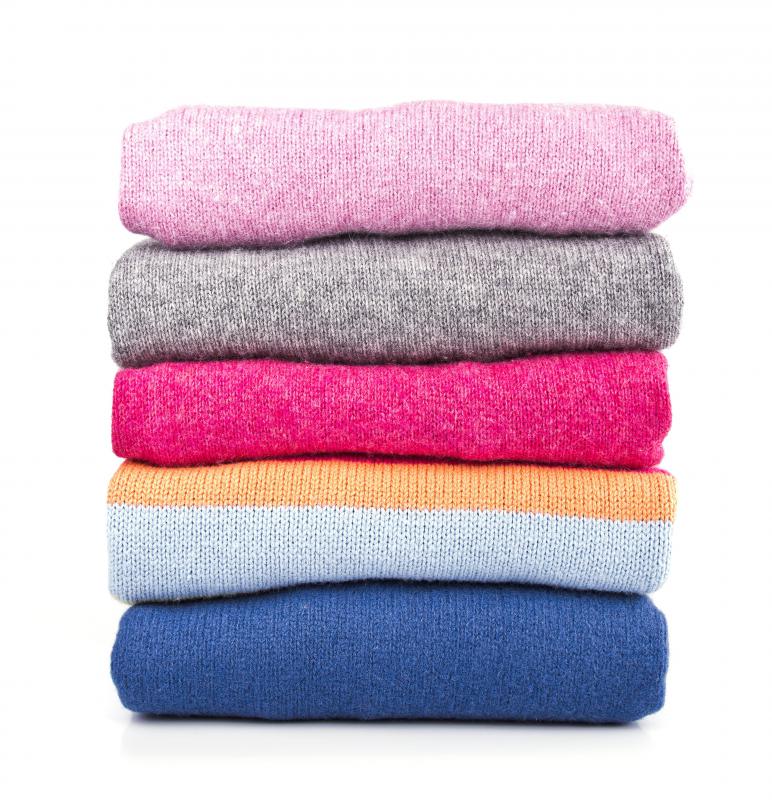At WiseGEEK, we're committed to delivering accurate, trustworthy information. Our expert-authored content is rigorously fact-checked and sourced from credible authorities. Discover how we uphold the highest standards in providing you with reliable knowledge.
What Kinds of Materials Make for Soft Yarn?
There are many materials that contribute to the softness of yarn. Some soft yarn is spun with animal fibers that are naturally soft to the touch, such as alpaca, angora, cashmere, and Merino wool. Many types of plant fiber are treated with chemicals or mechanically processed to enhance their softness. Other types of soft yarn have a silky texture because they contain soft man-made fibers, like Modal, Lyocell, and rayon. Washing wool yarns that have a rough, scratchy texture in a wool wash that contains lanolin can cause the yarn to become softer and less rough.
While some types of wool can be quite coarse, many animal fibers are soft and can be used to create similarly soft yarn. For instance, members of the camel family, such as llamas, alpacas, camels, and vicunas, all produce light, soft fleeces whose structure is similar to the fleece of another producer of soft fiber, the Merino sheep. Angora yarn is another soft yarn that is produced from the fur of the Angora rabbit. Cashmere, which comes from Cashmere goats, is another type of animal fiber that is naturally soft. Most animal fibers that have exceptional softness are soft because each individual fiber is very fine, with a lower average fiber diameter than that of coarser fibers.

The process of mercerizing plant fibers, or soaking them in a bath of lye and caustic soda, is a method that results in softer, stronger, and more lustrous yarn. Cotton is often treated in this way, but linen and hemp may also be mercerized. The treatment alters the chemical structure of plant fibers and causes plant cells to swell, thereby increasing the surface area of the yarn and making it feel softer. Fiber is extracted from bamboo stalks either by crushing the stalks and carding the fibers out, or by using a lye treatment similar to mercerization, accompanied by mechanical extrusion techniques. Bamboo yarn is a very soft yarn, with a shine and texture similar to silk.

Some man-made fibers have a smooth, slick, silky feel that enhances the softness of other fibers. Fibers that are produced from regenerated cellulose, such as rayon, Modal, and Lyocell are particularly soft, with a texture that mimics that of silk. These fibers are considered semi-synthetic, because they are made from naturally occurring plant polymers that are heavily processed. Rayon, Modal and Lyocell are usually produced using pulped wood, paper, or cotton fiber that is pressed, aged, and then extruded through a spinneret.

Before it is made into yarn, most wool taken from sheep contains a naturally occurring waxy substance called lanolin. Lanolin gives sheep natural water-proofing, and also adds to the softness of their wool. It is also allergenic, and most people who are allergic to wool are in fact allergic to the lanolin in the wool, rather than to the fiber itself. For those who are not allergic to lanolin, reintroducing the waxy substance to coarser wool yarn can soften the yarn's texture. Soaking a handmade garment in a wool wash that contains lanolin is a good way to soften rough, scratchy wool so that it can be worn.
AS FEATURED ON:
AS FEATURED ON:


















Discuss this Article
Post your comments